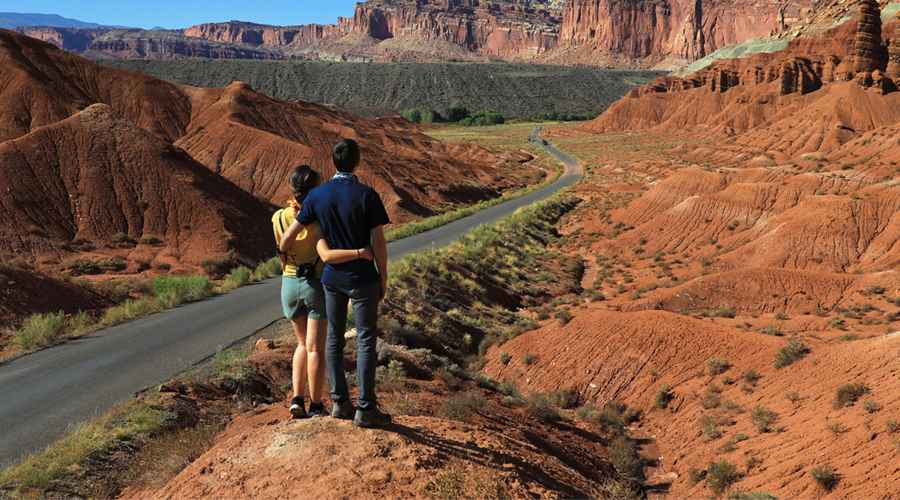Glacier National Park, situated in the northern Rocky Mountains of Montana, USA, is one of the country’s most mesmerizing natural landscapes. Known as the “Crown of the Continent,” the park features pristine alpine meadows, rugged mountain ranges, sparkling lakes, and over two dozen active glaciers. Beyond its visual splendor, Glacier National Park is also a living museum of biodiversity, ancient geological formations, and Native American heritage. Managed by the U.S. National Park Service, it attracts millions of visitors every year who come to hike its trails, explore its scenic drives, and immerse themselves in a wilderness largely unchanged for centuries.
History and Origins
The area that became Glacier National Park has been inhabited for thousands of years by Native American tribes such as the Blackfeet, Salish, and Kootenai. These tribes revered the land’s mountains and valleys as sacred, seeing them as places of creation and spiritual meaning. By the late 19th century, European settlers and explorers began mapping the region, leading to heightened interest in its natural beauty. Recognizing its ecological significance, Congress designated Glacier as the 10th U.S. national park in 1910.
A global dimension was added to the park in 1932 when it was joined with Waterton Lakes National Park of Canada to form the world’s first International Peace Park. This cross-border partnership symbolizes friendship between nations while protecting the natural ecosystem that transcends national boundaries.
Landscape and Geology
Glacier National Park spans over 1 million acres, showcasing dramatic landscapes shaped by geological forces and ice age glaciers. Towering peaks such as Mount Cleveland, the park’s highest at 10,479 feet, dominate the skyline. Deep valleys carved by ancient ice feature cascading waterfalls, glacial lakes, and lush forests.
The park was once home to around 150 glaciers, but due to the effects of climate change, fewer than 25 remain active today. These glaciers are not just scenic features; they are vital sources of water for rivers and ecosystems stretching far beyond park boundaries. Scientists estimate that if warming trends persist, the park’s glaciers could disappear entirely within the coming decades.
Flora and Fauna
Glacier National Park is part of a unique ecosystem where prairie, forest, and alpine habitats intersect. This variety supports an extraordinary diversity of plant and animal life. More than 1,000 plant species bloom across the park, including vibrant wildflowers in summer meadows, dense coniferous forests, and delicate alpine species adapted to high elevations.
Wildlife is equally impressive. The park is home to over 70 mammal species such as grizzly bears, black bears, mountain goats, elk, and wolverines. Bird enthusiasts can spot bald eagles, ospreys, and the striking harlequin duck along fast-moving streams. These animals depend on the park’s protected wilderness, making Glacier an essential corridor for many threatened species.
Outdoor Activities
For visitors, Glacier National Park is a paradise of outdoor adventures. Hiking is perhaps the park’s biggest draw, with over 700 miles of trails ranging from short walks to challenging backcountry treks. Famous hiking routes include the Highline Trail, which offers panoramic views along the Continental Divide, and the Grinnell Glacier Trail, which takes adventurers close to one of the park’s iconic glaciers.
The Going-to-the-Sun Road, a 50-mile engineering marvel completed in 1932, allows travelers to experience the heart of the park from the comfort of a car. It winds through valleys and across passes, presenting breathtaking scenic viewpoints. For those who prefer water-based exploration, kayaking, canoeing, and fishing are popular in lakes such as Lake McDonald and St. Mary Lake. In winter, the park transforms into a playground for snowshoeing and cross-country skiing, with far fewer crowds than in summer months.
Cultural Significance
The cultural dimension of Glacier National Park is as significant as its ecological one. The Blackfeet Indian Reservation borders the park to the east, and the tribe maintains strong ties to the land. Many visitors learn about Native culture through interpretive programs, art, and storytelling, which enrich the experience beyond natural sightseeing. Preserved historic lodges and chalets, built during the early 20th century, also reflect a unique chapter in park history when railroads encouraged tourism to the “American Alps.”
Conservation Challenges
Despite its protected status, Glacier National Park faces pressing challenges. Climate change remains the most critical issue, threatening to melt glaciers, alter ecosystems, and disrupt water cycles. Increased visitation, topping three million annually in recent years, has also strained infrastructure and raised concerns about preserving the park’s serenity.
Conservationists and park authorities are working to balance preservation with accessibility. Initiatives such as shuttle systems, restricted entry permits for popular areas, and educational programs aim to reduce human impact while ensuring visitors can still enjoy the park. Collaboration with Indigenous groups, scientists, and international agencies also strengthens conservation strategies.
Why Glacier National Park Matters
Glacier National Park matters not just as a travel destination but as a vital wilderness that embodies the balance of nature, culture, and international cooperation. It is a place where glaciers sculpt the landscape, forests provide refuge for rare animals, and people connect with both history and the environment. For visitors, it represents inspiration and renewal; for scientists, it is a living laboratory of climate and ecosystems; and for local tribes, it remains sacred land with deep spiritual value.
In today’s world of rapid urbanization and environmental challenges, Glacier National Park is a reminder of the beauty and fragility of natural landscapes. Each snow-fed river, each rugged mountain peak, and each delicate wildflower underscores the importance of protecting such places for future generations.
Visiting Glacier National Park is not simply a vacation—it is an encounter with the timeless grandeur of the Earth, a journey into one of nature’s greatest sanctuaries, and a call to cherish the wild beauty that still exists in our world.
